Gotthard von Kettler (también escrito Ketteler, en alemán: Gotthard Kettler, Herzog von Kurland; c. Anröchte, 2 de febrero de 1517 – Mitau, 17 mayo de 1587) fue el último Maestro de la Orden Livona y el primer Duque de Curlandia y Semigalia.
Kettler provenía de una antigua familia de nobles de Westfalia y el noveno hijo del caballero alemán Gotthard Kettler zu Melrich (mencionado entre 1527-1556) y su esposa Sofía de Nesselrode. El hermano mayor de Gotthard, Guillermo Kettler, fue el obispo de Münster entre 1553 y 1557.

Ana de Mecklemburgo, la hija de Alberto VII de Mecklemburgo-Güstrow y la Princesa Ana de Brandemburgo
María Leonor de Cléveris (16 de junio de 1550 - 1 de junio de 1608) fue una noble alemana, primogénita del duque deCléveris, Jülich y Berg, Guillermo V el Rico y de la archiduquesa austriaca María de Habsburgo-Jagellón, hija del emperadorFernando I y de Ana Jagellón de Hungría y Bohemia.

George I of Württemberg-Montbéliard, nicknamed "the Cautious" (4 February 1498 at Urach Castle in Bad Urach – 17 July 1558 at Kirkel Castle in Kirkel) was a son of the Duke Henry of Württemberg and his second wife, the Countess Eva of Salm.
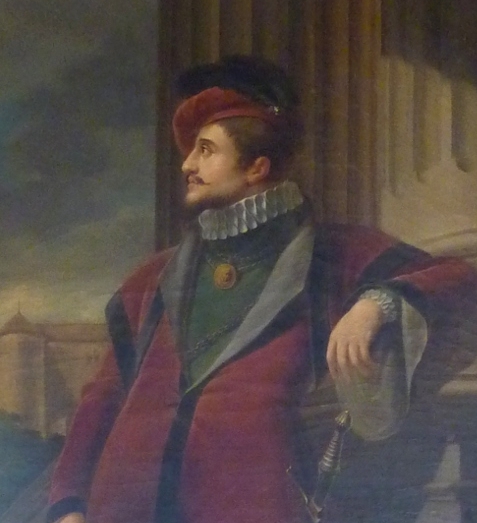
Barbara of Hesse, Duchess of Württemberg-Mömpelgard (8 April 1536 – 8 June 1597)[1] was a German noblewoman, and the wife of Count George I of Württemberg-Mömpelgard. Her second husband was Daniel, Count of Waldeck.
Barbara was born in Kassel, Hessen on 8 April 1536, one of the ten children of Philip I, Landgrave of Hesse and his legitimate wifeChristine of Saxony. She had four sisters and five brothers including George I, Landgrave of Hesse-Darmstadt. Her father was a leading champion of the Protestant Reformation. While married to her mother, he also married bigamously his morganatic wife,Margarethe von der Saale, by whom he had another nine children.
Her paternal grandparents were William II of Hesse and Anna of Mecklenburg-Schwerin, and her maternal grandparents wereGeorge, Duke of Saxony and Barbara Jagiellon, daughter of King Casimir IV Jagiellon of Poland and Elisabeth of Austria.
Joachim Ernest of Anhalt (21 October 1536 – 6 December 1586), was a German prince of the House of Ascania, ruler of the principality of Anhalt-Zerbst from 1551, and from 1570 sole ruler of all the Anhalt lands.
Joachim Ernest was born in Dessau on 21 October 1536 as the second son of John V, Prince of Anhalt-Zerbst, by his wife Margaret, daughter of Joachim I Nestor, Elector of Brandenburg. He received an extensive education under the supervision of his father. On 1 February 1549, just thirteen years of age, he was officially admitted to the University of Wittenberg, where, among others, he studied with the theologian Georg Helt.

Agnes (b. Barby, 23 June 1540 – d. Bernburg, 27 November 1569), daughter ofWolfgang I, Count of Barby-Mühlingen.
John George of Brandenburg (German: Johann Georg) (11 September 1525 – 8 January 1598) was a Prince-elector of theMargraviate of Brandenburg (1571–1598) and a Duke of Prussia. A member of the House of Hohenzollern, he was the son ofJoachim II Hector, Elector of Brandenburg, and his first wife Magdalena of Saxony.

Sophie of Legnica (1525 – 6 February 1546) was a daughter of Duke Frederick II of Legnica, Brzeg and Wohlau and his second wife Sophie of Brandenburg-Ansbach-Kulmbach (1485 – 1537).
John of Brandenburg-Küstrin (German: Johann von Brandenburg-Küstrin, or Hans von Küstrin; 3 August 1513 – 13 January 1571), was a member of the House of Hohenzollern and a Margrave of Brandenburg-Küstrin. John was the younger son of Joachim I Nestor of Brandenburg, and Elizabeth of Denmark, Electress of Brandenburg.
Catherine of Brunswick-Wolfenbüttel (1518, Wolfenbüttel – 16 May 1574, Krosno Odrzańskie) was a Princess of Brunswick-Wolfenbüttel by birth and by marriage Margravine of Brandenburg-Küstrin.
Catherine was a daughter of the Duke Henry V of Brunswick-Lüneburg (1489–1568) from his first marriage to Maria of Württemberg (1496–1541), daughter of Count Henry of Württemberg.
Joachim II Hector (German: Joachim II Hector or Hektor; 13 January 1505 – 3 January 1571) was a Prince-elector of theMargraviate of Brandenburg (1535–1571), the sixth member of the House of Hohenzollern. Joachim II was the eldest son ofJoachim I Nestor, Elector of Brandenburg and his wife Elizabeth of Denmark, Norway, and Sweden.

Magdalena of Saxony (7 March 1507 – 25 January 1534) was Margravine of Brandenburg, its "Electoral Princess", the Electoral equivalent of a crown princess.
She was the daughter of George the Bearded, Duke of Saxony and his wife Barbara. Magdalena's maternal grandparents wereKazimierz IV Jagiellon and his wife queen Elisabeth of Austria, daughter of Albert II of Germany.

Frederick IV of Fürstenberg-Heiligenberg (1563–1617), (German: Friederich von Fürstenberg-Heiligenberg), member of theSwabian noble house of Fürstenberg, was Count (Graf) of Fürstenberg-Heiligenberg, today a part of Baden-Württemberg,Germany. He was the son of Count Joachim of Fürstenberg (1538–1598) and his wife Countess Anna of Zimmern.
Johann Georg of Hohenzollern-Hechingen (born 1577 in Hechingen; died 28 September 1623 in Hechingen) was the first Prince of Hohenzollern-Hechingen.
Johann Georg was the only surviving son of Count Eitel Friedrich IV of Hohenzollern-Hechingen (1545–1605) from his second marriage with Sibylle (1558–1599), daughter of Count Froben Christoph of Zimmern. Johann Georg was raised by his relatives in Berlin at the court of Brandenburg.
Maria Isabel Maximiliana Manrique de Lara y Briceño 1538-1608
Christophe II de Bade-Bade (Christoph II von Baden-Baden), né le 26 février 1537, décédé le 2 août 1575 à Rodemarchern.
Fils de Bernard IV de Bade et de Françoise de Luxembourg.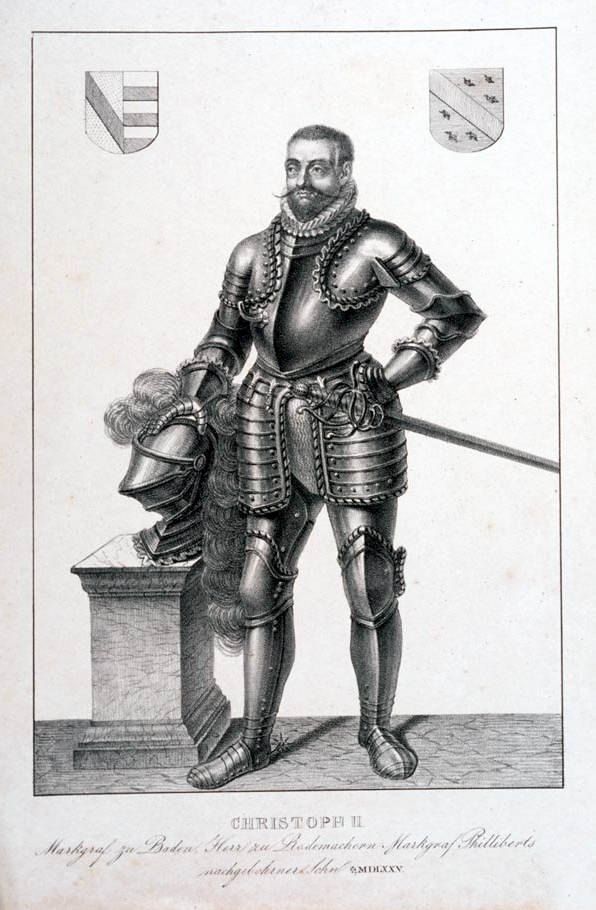
Cecilie Vasa de Suède princesse de Suède, également Cecilia Gustavsdotter Vasa, née 16 novembre 1540 à Stockholm, décédée le 27 janvier 1627 à Bruxelles, est la fille du roi Gustave Ier Vasa, roi de Suède (1496-1560) et de la reine Margaret Lejonhufvud (1514-1551) fille d'un noble suédois.
Gioacchino III Federico di Brandeburgo (Cölln, 27 gennaio 1546 – Köpenick, 18 luglio 1608) fuprincipe elettore di Brandeburgo.
Figlio di Giovanni Giorgio di Brandeburgo, e di sua moglie, Sofia di Legnica, succedette al padre nel 1598, e divenne amministratore dell'arcivescovato di Magdeburgo dal 1566 al 1598. Alla sua morte gli successe il figlio Giovanni Sigismondo.

Caterina di Brandeburgo-Küstrin (Cölln, 10 agosto 1549 – Küstrin, 30 settembre 1602) è stata una margravina di Brandeburgo-Küstrin per nascita e principessa elettrice di Brandeburgo dal matrimonio.
Caterina era la secondogenita di Giovanni, margravio di Brandeburgo-Küstrin (1513-1571) e di sua moglie Caterina (1518-1574), figlia di Enrico V di Brunswick-Lüneburg, duca di Brunswick-Wolfenbüttel.
Alberto Federico di Prussia, in tedesco Albrecht Friedrich von Preußen (Königsberg, 29 aprile 1553 –Fischhausen, 27 agosto 1618), fu Duca di Prussia dal 1568 fino alla sua morte.
Era figlio di Alberto I di Prussia e Anna Maria di Brunswick-Lüneburg. Fu il secondo ed ultimo Duca di Prussia appartenente al ramo Ansbach della famiglia Hohenzollern.

Ludovico VI di Wittelsbach (Simmern, 4 luglio 1539 – Heidelberg, 22 ottobre 1583) fu un elettore palatino del Palatinato-Simmern della casata dei Wittelsbach.
Era il figlio maggiore di Federico III del Palatinato e della sua prima moglie, Maria, figlia del margravio Casimiro di Brandeburgo-Bayreuth. Diversamente dal padre, rivolse la propria attenzione al luteranesimo più che al calvinismo, rifiutando gli incarichi ai calvinisti nell'Università di Heidelberg.
Elisabetta d'Assia (Kassel, 13 febbraio 1539 – Heidelberg, 15 marzo 1582) fu langravia Assia e elettrice consorte del Palatinato.
Elisabetta era figlia del langravio Filippo I d'Assia (1501-1567) e di sua moglie Cristina (1505-1549), figlia del duca Giorgio di Sassonia.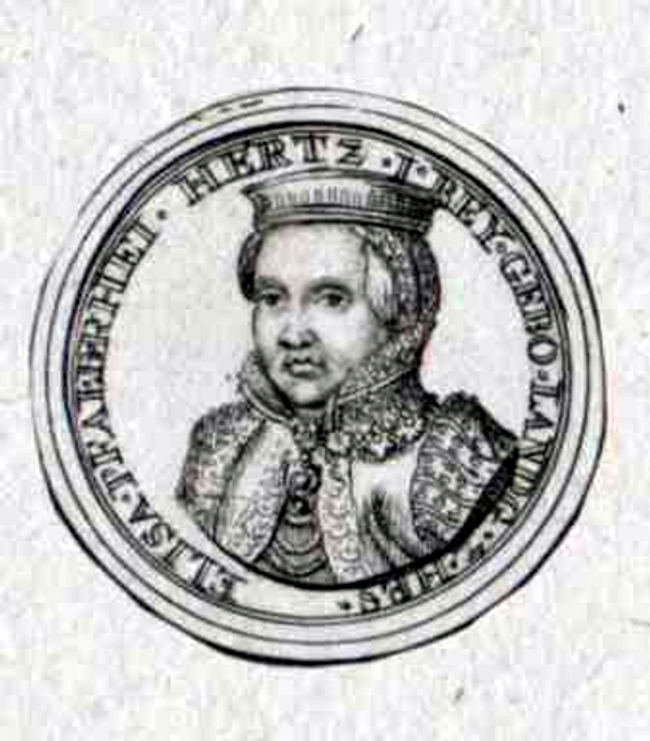
Giovanni di Schleswig-Holstein-Sonderburg (Haderslev, 25 marzo 1545 – Glücksburg, 9 ottobre 1622) fu il quarto figlio diCristiano III di Danimarca e di Dorotea di Sassonia-Lauenburg. Portò il titolo di duca di Schleswig-Holstein-Sonderburg.
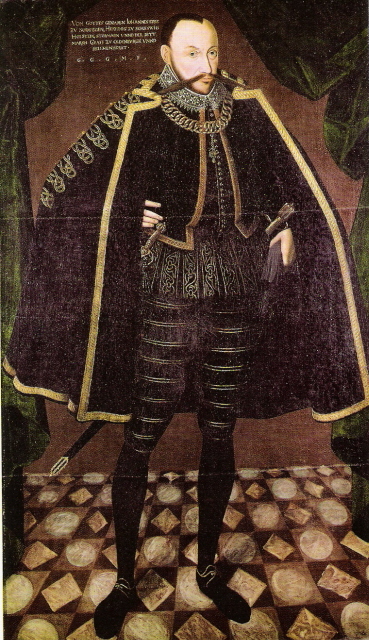 | ||
Johann Albrecht VI, conde de Mansfeld-VorderortJohann Albrecht VI, Graf von Mansfeld-VorderortMagdalene von Schwarzburg-BlankenburgPadres
Johann VI, Graf von Nassau-Katzenelnbogen-DiezPadresElisabeth, Landgräfin von LeuchtenbergPadres
Giovanni VII di Nassau-Siegen (7 giugno 1561 – 27 settembre 1623) fu conte di Nassau a Siegen e di Freudenberg (con il nome di Giovanni I).
Era il secondo figlio del conte Giovanni VI di Nassau-Dillenburg e di sua moglie, Elisabetta di Leuchtenberg.
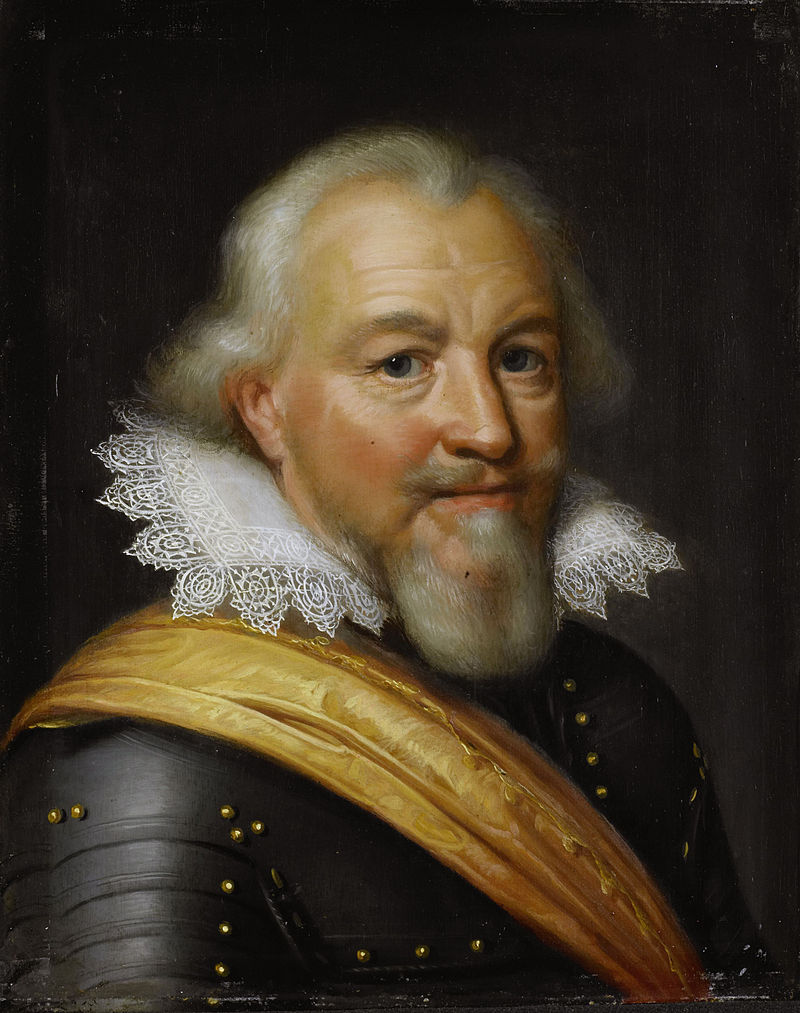
Contessa Maddalena di Waldeck (9 settembre 1558 – agosto 1599) era una figlia di Filippo IV di Waldeck-Wildungen (1493–1574) e di sua moglie, Jutta di Isenburg (+ 1564).
Guillermo I de Nassau, llamado Guillermo el Rico (Dillenburg, 10 de abril de 1487 - Dillenburg, 6 de octubre de 1559), fue conde de Nassau-Dillenburg, de la Casa de Nassau.
Era el hijo menor de Juan V de Nassau-Dillenburg e Isabel de Hesse (hija del landgrave Enrique III de Hesse-Marburgo y Ana de Katzenelnbogen). Guillermo fue hermano del conde Enrique III de Nassau-Breda y padre de Guillermo de Orange, a quien dejó en herencia el principado de Orange.
Es antecesor de la familia real holandesa por la rama de su primogénito Guillermo.
La condesa Juliana de Stolberg-Wernigerode (Stolberg, actualmente Alemania, 15 de febrero de 1506 - Dillenburg, 18 de juniode 1580) fue la madre de Guillermo de Orange, el principal impulsor durante el siglo XVI de la guerra de Flandes que los Países Bajos libraron para conseguir su independencia del Imperio español.
Juliana era hija de Botho VIII de Stolberg-Wernigerode y Ana de Eppstein-Königstein. Educada en el catolicismo, cambió dos veces de confesión: la primera al luteranismo y después al calvinismo. Junto a su segundo marido fue convencida protestante, educando a sus hijos en esta doctrina. A la muerte de su segundo marido en 1559, vivió en el castillo de Dillenburg (Alemania), propiedad de su hijo Juan, donde murió en 1580.
Dedicó toda su vida al cuidado de sus hijos, especialmente de Guillermo. Cuando éste comenzó su rebelión contra Felipe II de España, Juliana le apoyó moral y económicamente, gracias a lo cual Guillermo pudo mantener su campaña contra los españoles en los Países Bajos.
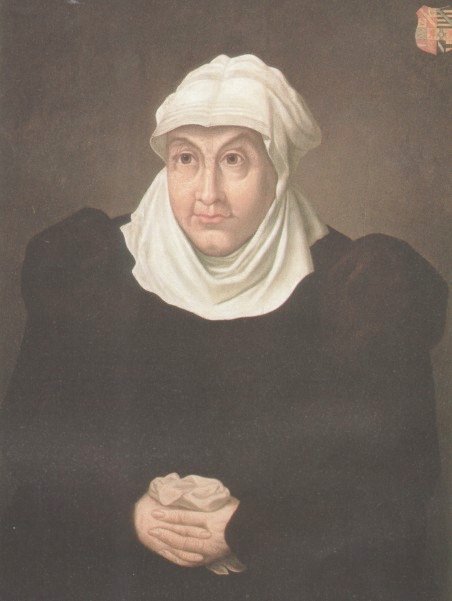
Gaspard de Châtillon (Châtillon-sur-Loing, 16 febbraio 1519 – Parigi, 24 agosto 1572) è stato un militare francese.
Conosciuto anche come Gaspard II de Coligny, o solo come Gaspard de Coligny, barone di Beaupont e Beauvoir, Montjuif, Roissiat,Chevignat, fu ammiraglio di Francia e comandante militare degli ugonotti. Dei quattro Gaspard della casata dei Coligny fu il più famoso.
Proveniente da una famiglia di antica nobiltà borgognona, attestata come tale fin dall’XI secolo ed al servizio del re di Francia dai tempi di Luigi XI, era figlio di Gaspard I de Coligny, maresciallo di Francia nel (1516) sotto Francesco I, e della di lui moglie Luisa di Montmorency, vedova Fercy de Mailly.[1]
La madre, Luisa di Montmorency, era sorella di Anneo di Montmorency, che fu connestabile di Francia fra il 1538 ed il 1541. Il padre morì in Guienna quando Gaspard aveva 3 anni e quindi fu allevato dalla madre insieme agli altri tre fratelli, sotto il controllo dello zio materno Anne de Montmorency.

Johann Wilhelm (11 March 1530 – 2 March 1573), was a duke of Saxe-Weimar.
He was the second son of John Frederick I, Elector of Saxony, and Sibylle of Cleves.

Dorothea Susanne of Simmern (15 November 1544, Simmern – 8 April 1592, Weimar) was a princess of the Electorate of the Palatinate and by marriage Duchess of Saxe-Weimar.
Dorothea Susanne was the daughter of elector palatine Frederick III (1515–1576) from his marriage to Marie (1519–1567), daughter of Margrave Casimir of Brandenburg-Kulmbach.
Friedrich Wilhelm I (25 April 1562 in Weimar – 7 July 1602 in Weimar) was a duke of Saxe-Weimar. He was the eldest son ofJohann Wilhelm, Duke of Saxe-Weimar and Dorothea Susanne of Simmern.

Countess Palatine Anna Maria of Neuburg (18 August 1575, Neuburg an der Donau – 11 February 1643, Dornburg) was Countess Palatine of Neuburg and by marriage Duchess of Saxe-Weimar.
Anna Maria was the eldest child of the Count Palatine and Duke Philip Louis of Neuburg (1547–1614) from his marriage to Anna(1552–1632), daughter of Duke William of Jülich-Cleves-Berg.
Henry Julius (German: Heinrich Julius) (15 October 1564 – 30 July 1613) was duke of Brunswick-Lüneburg and prince ofWolfenbüttel from 1589 until his death. In 1576 he had become the first rector of the Protestant University of Helmstedt.
Henry Julius was born in Hessen am Fallstein as the eldest son of Julius, Duke of Brunswick-Lüneburg and his wife, Hedwig of Brandenburg. Already in 1566, at the age of two, he had been elected bishop of Halberstadt by the cathedral chapter; however, a condition of his election was an agreement that the cathedral chapter would lead the Bishopric under its own authority until Henry Julius reached the age of 14. Hence he took over administration of the Bishopric in 1578, and became active as a temporal as well as spiritual ruler. He improved general education in the Bishopric, and completed the Protestant Reformation, although he allowed Catholic office holders to keep their privileges — except that he strictly prohibited priests from having mistresses.
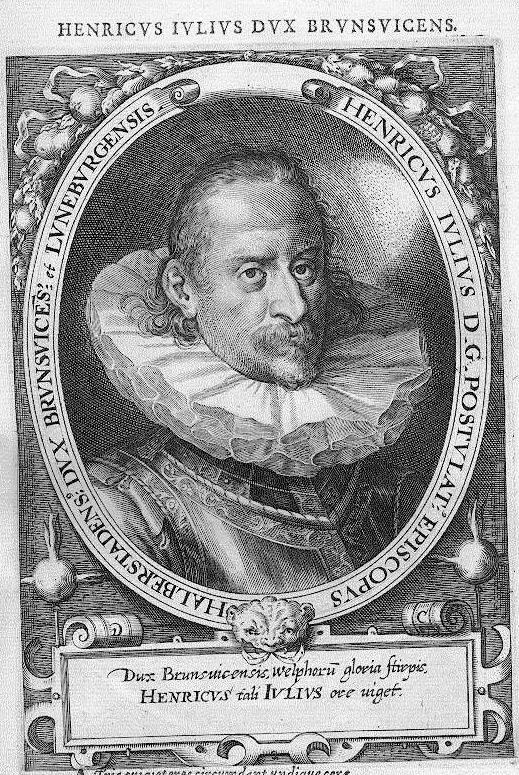
Elisabeth of Denmark (25 August 1573 – 19 June 1626) was duchess consort of Brunswick-Lüneburg as married to Duke Henry Julius of Brunswick-Lüneburg. She was regent of Brunswick-Lüneburg in 1616-1622.
She was the eldest daughter of King Frederick II of Denmark and his spouse Sophie of Mecklenburg-Güstrow. First raised with her maternal grand parents, she returned to Denmark in 1579.
Felipe Wolfgang de Hanau-Lichtenberg
Philipp Wolfgang von Hanau-Lichtenberg
Padres
Juana de Oettingen-OettingenJohanna zu Oettingen-Oettingen
Padres
Wolfgang de Hohenlohe-NeuensteinWolfgang zu Hohenlohe-Neuenstein
Padres
Magdalena de Nassau-DillenburgMagdalena von Nassau-Dillenburg
Padres
Padres
Juana de Hohenlohe-WaldenburgJohanna zu Hohenlohe-Waldenburg
Padres
Jorge III de ErbachGeorg III. von Erbach
Padres
Ana de Solms-LaubachAnna zu Solms-Laubach
Padres
| ||
No hay comentarios:
Publicar un comentario